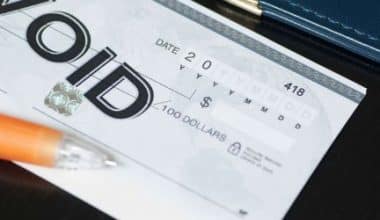Cash accounting is a system that records revenue as it is received and expenditures as they are spent. Three important considerations should be made when considering whether cash accounting is the best option for your business. Keep reading to discover more about what is cash accounting, method, petty cash accounting, and cash accounting method vs accrual.
Cash Accounting
Cash accounting is one of two accounting methods. The alternative is accrual accounting, which records revenue and expenditure as they occur. This is frequently used by small businesses since it is simpler and more basic. As well as provides a clear view of the business’s actual cash position. On the other hand, corporations are compelled by Generally Accepted Accounting Principles to adopt accrual accounting (GAAP).
When transactions are recorded on a cash basis, they have a delayed effect on a company’s books from the time the transaction is completed. As a result, cash accounting is frequently less accurate in the short term than accrual accounting.
While most small firms have the option of using either the cash or accrual method of accounting, the IRS mandates organizations with yearly gross revenue of more than $25 million to adopt the accrual method. Additionally, the Tax Reform Act of 1986 prevents C companies, tax shelters, certain types of trusts, and partnerships with C Corporation partners from using cash accounting. Take note that businesses must stick to the same accounting principles for tax filing as they use for internal bookkeeping.
Cash Accounting Method
Due to the ease with which cash basis may be implemented, it is frequently used by small enterprises. The cash method deviates from Generally Accepted Accounting Principles standards (GAAP). Financial transactions are not documented under the cash accounting method until they are actually realized.
For instance, revenue is recorded when money is received, and expenses are recorded when a bill is satisfied. Cash accounting financial statements include information about the sources of funds during the tax period, how the cash was spent, and the cash balances at the date of reporting. The financial statements also include further information on obligations.
>> Learn More: BDO Accounting: All You Need To Know (+ Salary Details)
While cash accounting is best suited for sole proprietorships and small businesses, it can also be used to handle personal accounts up to a certain level. For instance, if a business’s annual revenues exceed $5 million, the Internal Revenue Service (IRS) requires it to use the accrual method of accounting.
One significant disadvantage of the method is that it might portray an inaccurate picture of an entity’s financial health, particularly when unpaid expenses, cash receipts, or uncollected receivables are not included in the financial statements.
What is Cash Accounting?
Cash accounting is a method wherein payment receipts are recorded at the time of receipt and expenses are documented in the period of payment. In other words, revenues and expenditures are recorded concurrently with the receipt and payment of cash.
It is also known as cash-basis accounting. It is in contrast to accrual accounting, which records revenue when it is earned and expenditure when liabilities are incurred, regardless of when the fund is received or paid.
You can also define this as a method where revenues, as well as expenses, are realized as they are received or paid out in case of an expense. It is fairly straightforward to utilize methodology. Let’s understand it with the help of an example.
If your firm ABC receives an order for ten computers on October 10 but delivers the products in November, the transaction will be recorded in November only, not October.
On November 10, your firm ABC gets $1,000,000 in cash for the sale of ten computers to company XYZ. The accountant will enter the selling transaction on November 10, not October 10.
>> Read Also: Fund Accounting: definition, basics, salary, jobs (+ Quick Guide).
Petty Cash Accounting
Petty cash accounting is a small sum of money held on the premises of a business to cover minor monetary needs. Office supplies, cards, and flowers are all examples of these types of payments. You can find petty cash in a petty cash drawer or box. A larger business may have multiple petty cash locations, most likely one per building or even each department.
To establish a petty cash fund, the cashier creates a check for the amount of funding assigned to the petty cash fund in question (usually a few hundred dollars). Alternatively, if there are sufficient notes and coins on the premises. The cashier could simply count out the cash for the petty cash fund. You have to understand this, a debit is made to the petty and a credit is made to the fund account. As well as in the initial petty cash journal entry.
>> Discover: DEPRECIATION ACCOUNTING: Definition, Methods, Formula & All you should know.
Cash Accounting Method vs Accrual
The difference between cash vs accrual accounting is in the sequence. In which sales and purchases are recorded in your financial statements. While cash accounting records income and expenses as they occur, accrual accounting records revenue as it is earned. As well as expenses as they are billed (but not paid).
Further Explanation On Accrual basis accounting To Understand Better
On the plus side, accrual accounting provides a more accurate picture of income and expenses over time. As well as providing a long-term view of the business that cash accounting cannot.
The disadvantage of accrual is that it does not provide visibility into cash flow; a business can appear to be very profitable while actually having empty bank accounts. Without careful cash flow monitoring, accrual can have potentially disastrous consequences.
>> Read More: ACCRUAL ACCOUNTING: A SIMPLIFIED GUIDE FOR BEGINNERS (+Detailed examples)
What Are the 4 Types of Cash?
According to economists, there are four basic sorts of money: commercial money, fiduciary money, fiat money, and commodity money.
How Do You Record Cash In Accounting?
As usual, record cash payments as a debit in your cash receipts journal. Then, debit the customer’s account receivable for all credit purchases. Record the entire credit entry in your sales journal.
Is Cash an Asset or Liability?
yes. Cash is the first line item on a company’s balance sheet and is a current asset. Cash is the most liquid asset type and can be used to acquire other assets with relative ease. The ease with which an asset can be converted into cash is its liquidity.
Is Cash Accounting a Gaap?
Under generally Acceptable Accounting Principles (GAAP) or International Financial Reporting Standards, cash basis accounting is unacceptable (IFRS).
What Is the Double Entry for Cash?
Every financial transaction in double-entry bookkeeping is reflected as a debit to one account and a credit to another. When a company borrows $5,000, for instance, the cash (asset) account is reduced by that amount and the outstanding debt (liability) account is increased by the same amount.
What Liability Is Cash?
Money in hand or deposited into a business bank account is considered cash. Current liabilities are those that must be paid immediately, whereas long-term liabilities are those that must be paid at some point in the future. Credit lines, loans, salaries, and accounts payable are examples of current liabilities that must be repaid within a year.
Is Cash a Revenue or Expense?
Assets are defined in accordance with generally accepted accounting principles as resources owned by a company that can generate future economic benefits. Assets include money, goods in stock, accounts receivable, real estate, infrastructure, and machinery.
Conclusion
Cash accounting provides a real-time, up-to-date view of your fund flow and balances. This can be advantageous for a small business that does not wish to become entangled. Perhaps, in an excessive amount of credit and loans. It is also good for businesses earning less than $83,000 per year.
- SogoTrade: A Comprehensive 2022 Sogotrade Review (Updated)
- Quant Salary: A Complete Breakdown & How to become a Quant
- PUBLIC ACCOUNTING FIRMS: The Ultimate List in 2022
- TOP ACCOUNTING FIRMS: 35+ Best in the World (Updated)
- NASCAR LOGO: Nascar Race Car History & Specifications(Opens in a new browser tab)
- Direct Method Cash Flow: Definition, Examples & Advantages(Opens in a new browser tab)
- CASH ACCOUNTING: Meaning, Examples, Merits, and Demerits(Opens in a new browser tab)






